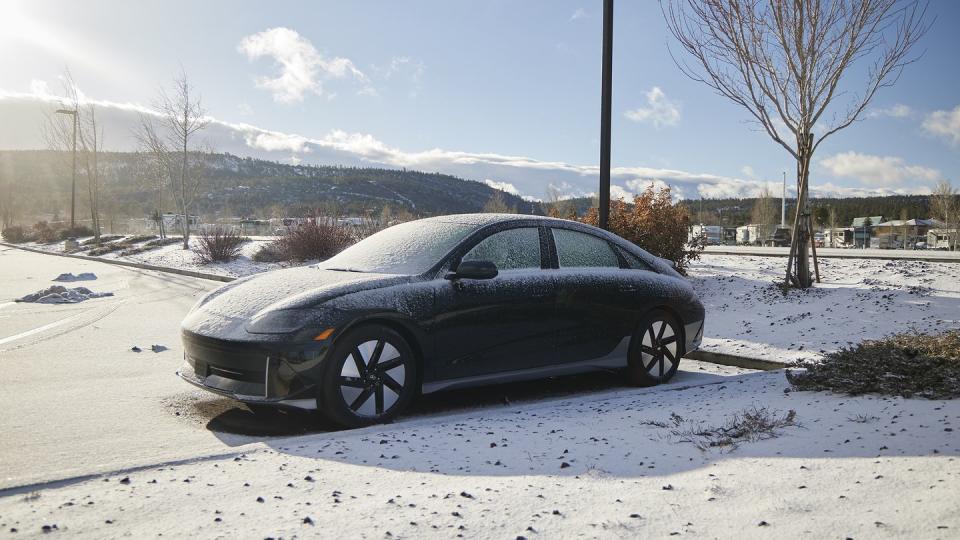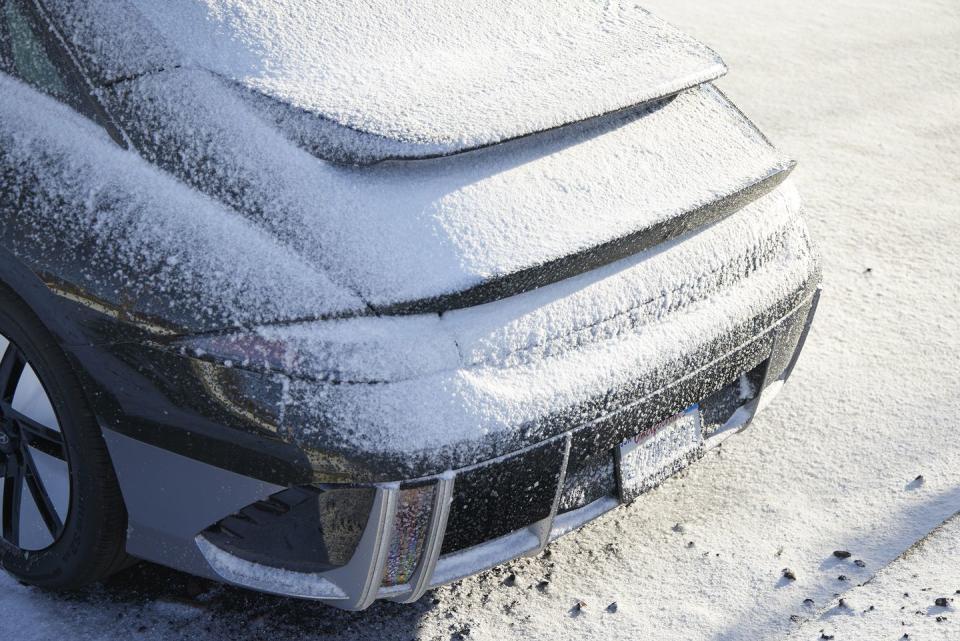Does an EV Work as Well in Cold Weather?

"But what happens if it gets really cold, or snows?" is an understandably common question from car shoppers considering an electric vehicle for the first time.
Rest assured, shoppers. EVs do fine in winter, though range can be somewhat reduced—and there are a few new things to remember. Here’s our short list of what you need to know about driving EVs in cold weather.
EV Range Is a Little Lower in Cold Temperatures
Electric-car batteries are like humans; they like to be around 70 degrees F. When temperatures fall, the battery’s performance degrades, and the additional climate control usage also burns extra energy. It's not a massive decline, but some owners report 10 to 20 percent lower range at temperatures below freezing, and generally the colder it gets the more your EV's range will be reduced. We recently ran a 75-mph highway-range test on our long-term Rivian R1T on a very cold, 12-degree day, and its range was 190 miles versus 250 in a moderate temperature, a loss of 60 miles or 24 percent.
Preconditioning Is a Very Good Idea
An electric car that’s plugged in to recharge, as many are overnight, will retain more range if the owner "preconditions" it before leaving. Virtually every EV has a phone app that will let an owner set a desired departure time and turn on preconditioning. That simply means the car uses grid power both to heat the cabin to a nice toasty temperature and to warm its battery to the desired operating temperature, conserving more of the battery charge for actual driving. It’s the EV version of remote starting for your gasoline car to warm it up before leaving.

Cabin Heating Can Use More Energy Than Cooling
Physics is simple: It takes more energy to heat a car from 30 to 70 degrees F than it does to cool it from 90 to 70 degrees F. Either way, you need to use a certain amount of energy to add or remove heat from the cabin. Air conditioning in an EV has a fairly minimal impact on overall battery range, and many EVs will tell you what percent of overall energy used went to heating or cooling. But heating on a very cold day can negatively affect range by a substantial amount.
Heated Seats and Steering Wheels Matter a Lot
It's a peculiarity of human physiology: If our hands and backsides are nice and warm, we think the ambient temperature is higher than it is because we feel warmer. So virtually every EV offers heated seats, and most have heated steering wheels available as well. Use the preconditioning (see above), and your seat and wheel will be lovely and warm when you enter the car.
Heat Pumps Matter Too
There are two ways to heat an EV cabin: radiant heat or a heat pump. Radiant heat passes air over wires that have electricity running through them to warm them—just like home baseboard heaters. It uses considerably more energy than a heat pump, which you can think of as an air conditioner that also runs in reverse to provide hot air. Many new EVs have heat pumps as standard or optional equipment for better efficiency, as demonstrated by a study of the cold-weather range loss in about 7000 EVs by telematics data company Recurrent.
Winter Driving Traction: Just the Same
EVs do all the rest of the winter stuff—traction control, all-wheel drive, perhaps special driving modes for snow or icy conditions—just like any other vehicle. It'll all be quite familiar.
What about Getting Stuck for Hours in a Snowstorm?
It's every winter driver's fear: getting stranded in a snowstorm for hours. Can an EV keep you warm the same way a gasoline car can? The answer is almost certainly yes. We tested two cars against each other: a popular mid-size EV sedan and a gasoline equivalent. In an outside temperature of 15 deg F, we found the EV with a full charge would keep occupants at 65 deg F for almost two days—45 hours—while the gasoline car with a full tank ran its heater for 52 hours. The number of people trapped for two entire days is negligibly low, and the EV would have provided more hours of warmth if it had a heat pump (see above).
As Always, Plan Ahead
If you live or drive in very cold weather, it is a good idea to keep your tank a little fuller than in warmer weather. The same applies to EVs: Keep them a bit more charged than you might otherwise. Most miles covered by today's EV drivers come from overnight home charging, meaning many EVs can start every day with a fully charged battery. As always, if you travel in snowy climes, it's smart to carry a shovel, warm clothes, food and water, and other necessities.
You Might Also Like

 Yahoo Autos
Yahoo Autos 